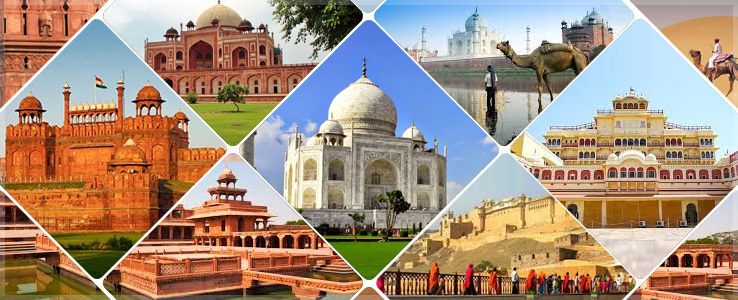The Golden Triangle Tour of India—comprising Delhi, Agra, and Jaipur—is a classic route that offers a condensed yet immersive insight into India’s cultural, historical, and architectural richness. But to truly make the most of this journey, careful planning is essential. From the ideal itinerary and transportation options to time management and add-on destinations, this guide offers expert advice to help you experience the Golden Triangle in the most meaningful way.
Choose the Right Duration and Itinerary
The standard Golden Triangle tour typically takes 5 to 7 days. However, the right duration depends on your travel goals. A 6-day plan offers a balanced pace:
Day 1-2: Explore Delhi’s landmarks like India Gate, Humayun’s Tomb, Qutub Minar, and the bustling markets of Chandni Chowk.
Day 3: Drive to Agra to visit the iconic Taj Mahal and Agra Fort.
Day 4: Continue to Fatehpur Sikri before heading to Jaipur.
Day 5-6: In Jaipur, explore the Amber Fort, City Palace, Jantar Mantar, and Hawa Mahal.
Travelers who wish to explore more in depth can expand their tour to include surrounding destinations like Ranthambore or Udaipur.
Best Time to Visit the Golden Triangle
Weather plays a crucial role in your travel experience. The ideal time to explore the Golden Triangle is between October and March. During these months, temperatures are cooler, making sightseeing more comfortable.
Summer (April–June): High temperatures and heatwaves can make travel exhausting.
Monsoon (July–September): Expect rain showers and humidity, which might limit outdoor activities.
Winter (October–March): Pleasant weather, though early mornings in Delhi and Agra can be foggy.
Planning your travel around festivals like Diwali, Holi, or Jaipur Literature Festival can enhance your cultural exposure.
Plan Local Transportation Smartly
Traveling between Delhi, Agra, and Jaipur is convenient due to well-developed road and rail connectivity. Private car hires are recommended for comfort and flexibility. However, trains like Gatimaan Express (Delhi–Agra) and Shatabdi Express are also reliable.
Within cities, opt for auto-rickshaws, app-based taxis (like Ola/Uber), or private guides for short-distance travel. While Jaipur and Agra are relatively compact, Delhi’s vast size might require structured planning to avoid traffic-heavy zones.
Visit Iconic Monuments with Expert Guidance
To understand the deep history behind each monument, it is advisable to explore them with certified local guides. Sites like the Taj Mahal, Amber Fort, and Qutub Minar have layered histories that often go unnoticed during unguided visits.
For travelers short on time, a Same Day Guided Tajmahal Tour with Agra Fort and Baby Taj offers a concentrated experience of Mughal history, architecture, and art. Such guided day tours ensure you don’t miss essential details while keeping the journey well-paced.
Integrate Wildlife for a Diverse Experience
While the Golden Triangle is primarily about architecture and culture, integrating a wildlife experience adds another dimension to the trip. Ranthambore National Park, located between Jaipur and Agra, is ideal for spotting tigers, leopards, and sloth bears in their natural habitat.
Booking a Ranthambore Gypsy/Jeep Safari can be a rewarding addition to your itinerary. Early morning or late afternoon safaris are best for wildlife sightings. However, pre-booking is essential due to limited entry slots and high demand, especially in peak season.
Add Cultural Extensions Thoughtfully
If your schedule allows, consider extending your Golden Triangle route to include cities like Udaipur, Jodhpur, or Mandawa to explore the broader cultural landscape of Rajasthan.
Themed journeys like Rajasthan Tour Packages can help travelers connect the dots between royal heritage, desert landscapes, and traditional Rajasthani craftsmanship. Cities like Bikaner or Bundi also offer less-touristed experiences, ideal for photography, culinary exploration, and folk encounters.
Leverage the Golden Triangle for Broader Travel
The Golden Triangle often acts as the foundation for pan-India travel itineraries. For those seeking deeper cultural dives, packages such as the golden triangle india tour package can be expanded to include destinations like Varanasi, Khajuraho, or even Kerala, providing a more holistic Indian experience. These extended routes require more time but offer a balanced mix of North and South Indian cultures.
Stay Safe and Be Prepared
To ensure a smooth experience during your Golden Triangle Tour, keep the following safety and practical tips in mind:
Carry a copy of your copyright and visa.
Avoid tap water; opt for bottled or filtered water.
Dress modestly, especially in religious sites.
Use licensed guides and trusted transportation services.
Download offline maps and translation apps if you’re not fluent in Hindi.
Health-wise, carry essential medications and basic first aid. India’s diverse culinary scene is tempting, but start slow with local food to avoid digestive issues.
Conclusion: Making Your Golden Triangle Tour Memorable
Planning your Golden Triangle Tour with an informed approach ensures a rewarding experience filled with history, culture, and unforgettable landscapes. Whether you're drawn by the Mughal-era marvels of Agra, the Pink City charm of Jaipur, or the cosmopolitan spirit of Delhi, curating your itinerary with thoughtful inclusions—like wildlife safaris or guided day tours—enhances both depth and comfort.
By blending flexibility with structure, and spontaneity with informed choices, you can turn your Golden Triangle journey into a truly transformative Indian travel experience.
